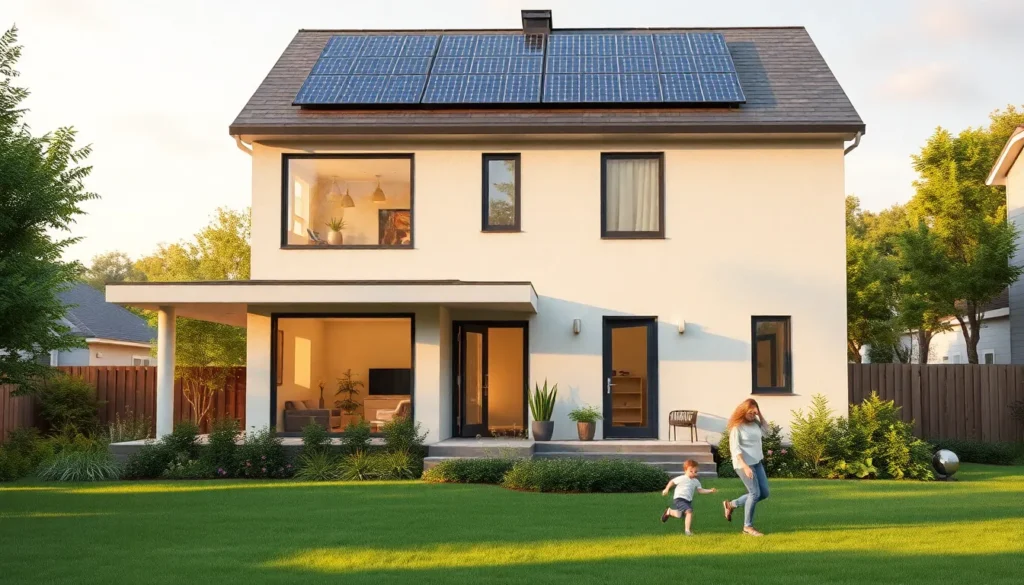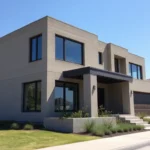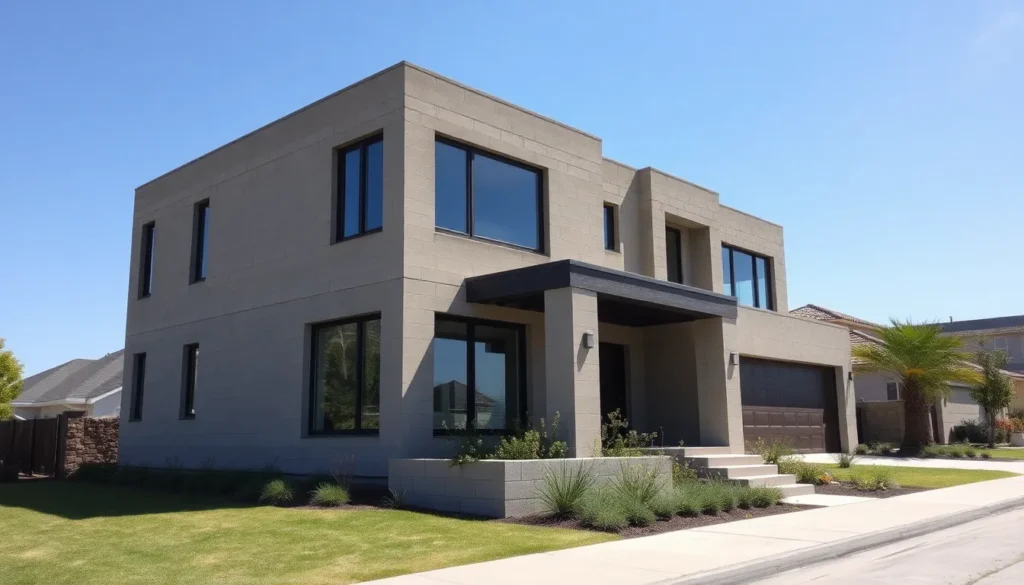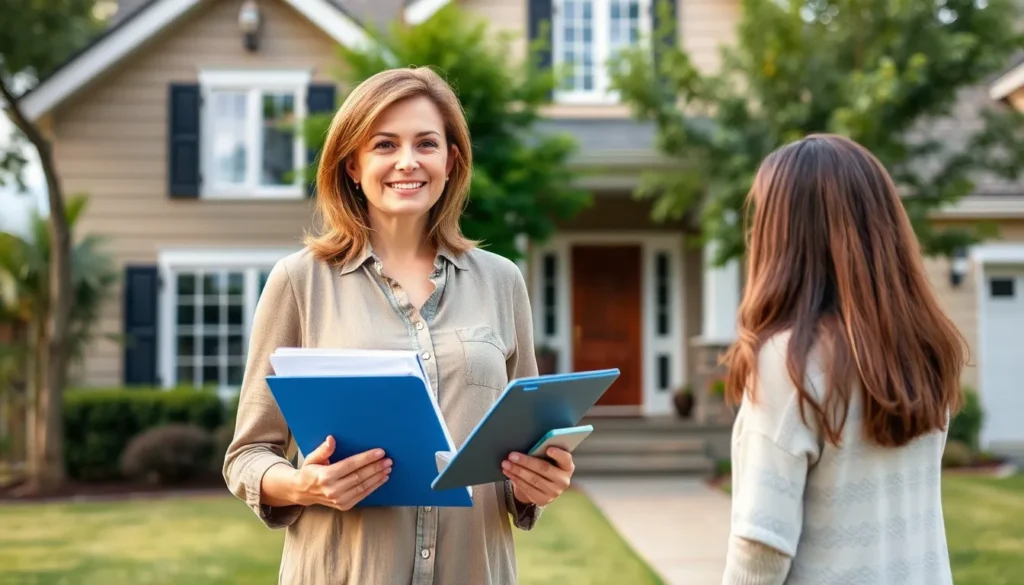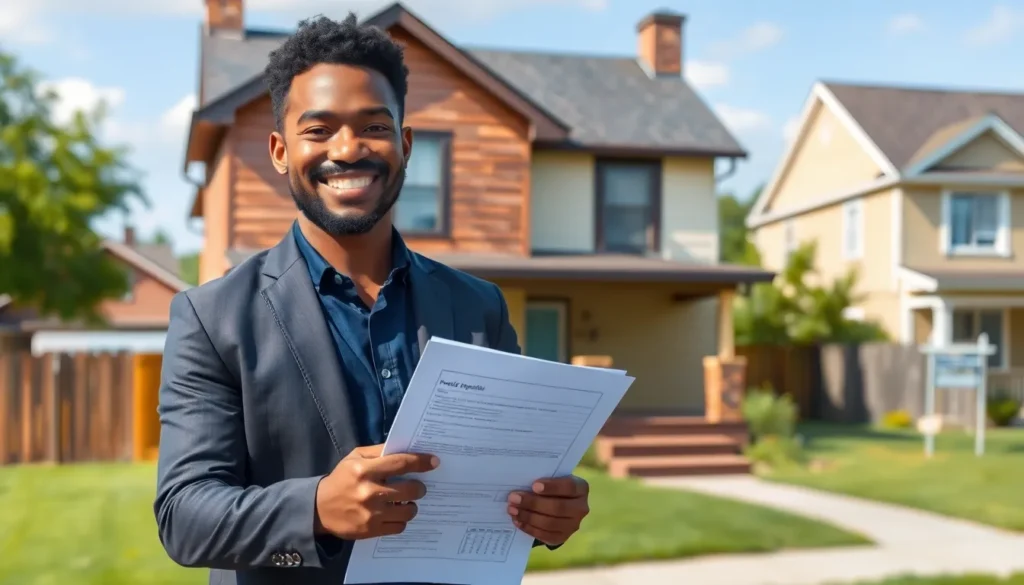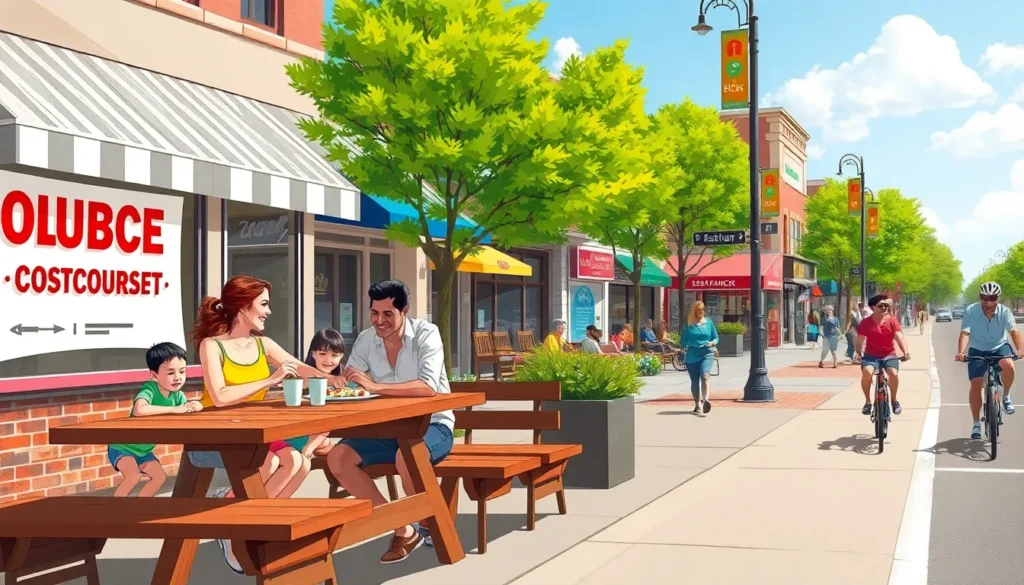In a world where energy bills seem to climb higher than a cat on a hot tin roof, low energy homes are like a breath of fresh air—minus the hefty price tag. These eco-friendly havens not only keep your wallet happy but also give Mother Earth a well-deserved hug. Imagine living in a space that’s as cozy as a warm blanket while being a champion for sustainability.
Table of Contents
ToggleOverview of Low Energy Homes
Low energy homes prioritize energy efficiency and sustainability. These residences minimize energy consumption through advanced building techniques and materials. Proper insulation, energy-efficient windows, and modern heating systems contribute significantly to maintaining a comfortable indoor climate.
The construction of low energy homes often involves renewable energy sources, such as solar panels. These systems harness natural sunlight, reducing reliance on traditional energy providers. Additionally, many low energy homes utilize energy-efficient appliances that lower utility bills while decreasing overall energy use.
Design plays a crucial role in low energy homes. Thoughtfully oriented to maximize natural light and ventilation, they reduce the need for artificial lighting and climate control. Homes that incorporate passive heating and cooling methods enhance energy efficiency without extra costs.
Low energy homes not only provide immediate savings but also offer long-term benefits. Investing in energy-saving features increases property value and attracts eco-conscious buyers. Studies show that energy-efficient homes sell faster and at higher prices than comparable traditional homes.
The growing demand for low energy homes reflects a shift towards sustainable living. Many governments and organizations offer incentives for building or purchasing these energy-efficient houses. Homebuyers often seek properties with low operating costs, making low energy homes increasingly appealing.
Low energy homes combine comfort, affordability, and environmental responsibility. These homes represent a proactive approach to reducing energy impact while enjoying modern living standards.
Benefits of Low Energy Homes
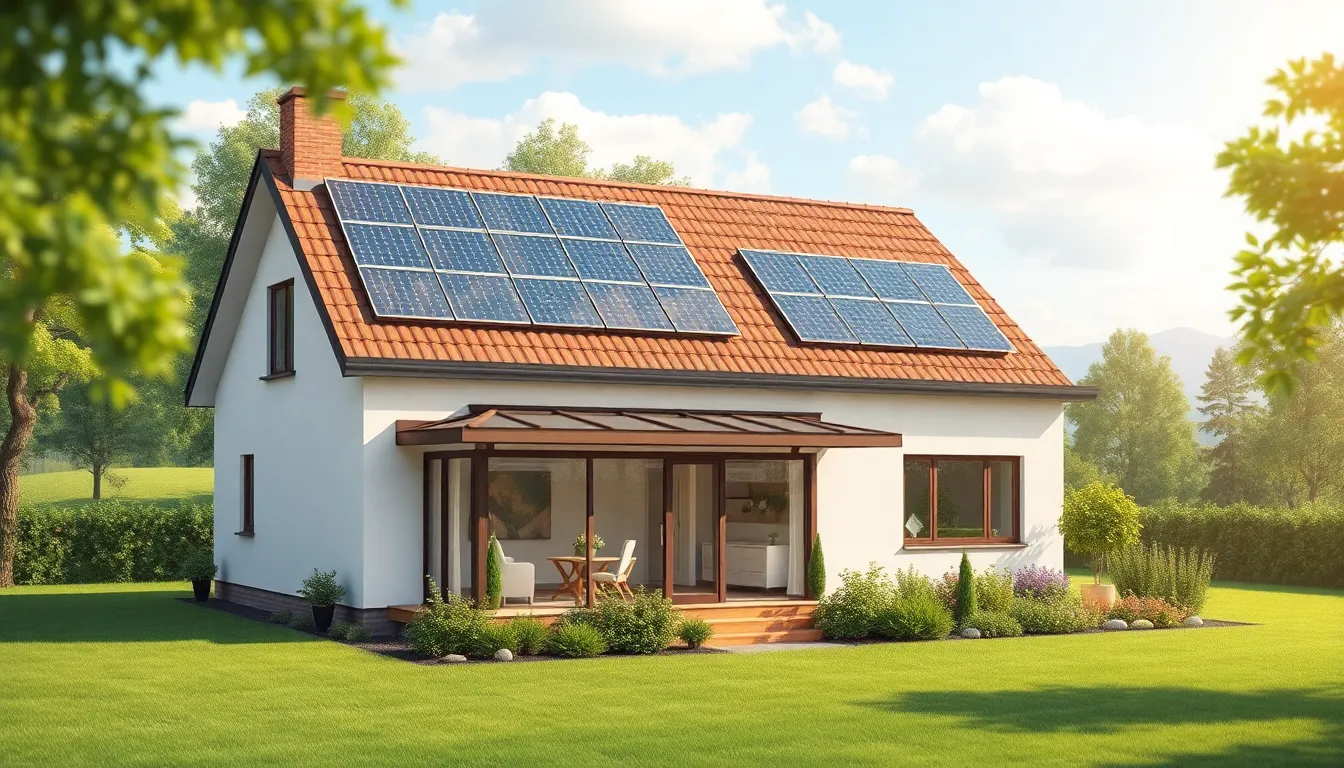
Low energy homes offer numerous advantages that resonate with eco-conscious individuals and families. Their design promotes sustainable living while enhancing comfort and affordability.
Environmental Impact
Low energy homes significantly reduce greenhouse gas emissions, contributing to environmental preservation. These structures often utilize energy-efficient materials that minimize waste during construction. By incorporating renewable energy sources like solar panels, they generate power sustainably. Natural light plays a vital role in reducing energy usage, cutting down on the need for artificial lighting. Moreover, effective insulation limits energy loss, making heating and cooling processes more efficient. Consequently, homeowners find themselves less reliant on fossil fuels, promoting a cleaner planet.
Economic Advantages
Economic benefits abound with low energy homes due to lower utility bills. These structures often feature energy-efficient appliances that consume less power, leading to significant savings over time. Increased property values also result from energy-efficient features, making these homes attractive investments. Many buyers prioritize energy savings, often paying premium prices for low energy homes. Government incentives further enhance financial benefits, offering tax breaks or grants for energy-efficient upgrades. Additionally, reduced maintenance costs contribute to long-term financial advantages for homeowners, solidifying the appeal of low energy living.
Design Features of Low Energy Homes
Low energy homes incorporate specific design elements that enhance efficiency and sustainability. Key features include advanced insulation and energy-efficient appliances.
Insulation Techniques
Effective insulation is crucial for maintaining comfortable temperatures. Homebuilders often use materials like spray foam, cellulose, and rigid foam boards. Insulating walls, roofs, and foundations minimizes heat loss in winter and keeps homes cool in summer. Improved insulation contributes significantly to lower energy consumption, enabling homeowners to benefit from reduced heating and cooling costs.
Energy-Efficient Appliances
Utilizing energy-efficient appliances plays a vital role in a low energy home. Energy Star-rated devices consume less electricity than standard options. These smart appliances reduce overall energy usage and often offer advanced features, like programmable settings and real-time energy monitoring. Investing in such appliances helps families lower utility bills while minimizing environmental impact.
Common Myths about Low Energy Homes
Many misconceptions surround low energy homes. Understanding the realities helps potential homeowners make informed decisions.
Myth: They Are Expensive
People often believe low energy homes cost more to build. Initial investments for energy-efficient materials and technologies typically result in long-term savings. Lower utility bills significantly offset upfront costs. According to the U.S. Department of Energy, energy-efficient homes can reduce energy expenses by 30% to 50%. Additionally, increased property values attract buyers seeking eco-friendly living options. Financial incentives from governments further decrease overall costs. Ultimately, investing in low energy homes often leads to substantial financial benefits over time.
Myth: They Are Uncomfortable
Some individuals assume low energy homes lack comfort. In reality, these homes enhance comfort through superior insulation and effective ventilation systems. Proper insulation minimizes drafts while maintaining consistent indoor temperatures. Enhanced air quality improves overall living conditions. Features such as energy-efficient windows allow for ample natural light without excessive heat gain. Many low energy homes include smart home technology that optimizes heating and cooling based on occupancy. These factors contribute to a pleasant living environment, dispelling the myth of discomfort.
Low energy homes are reshaping the future of sustainable living. They offer an enticing blend of comfort and affordability while significantly reducing environmental impact. As more individuals seek to lower energy costs and embrace eco-friendly practices, these homes stand out as a smart investment.
The integration of advanced building techniques and renewable energy sources not only enhances efficiency but also promotes a healthier lifestyle. With increasing awareness and government incentives, the appeal of low energy homes continues to grow.
Ultimately, choosing a low energy home is a step towards a more sustainable future, benefiting both homeowners and the planet.

